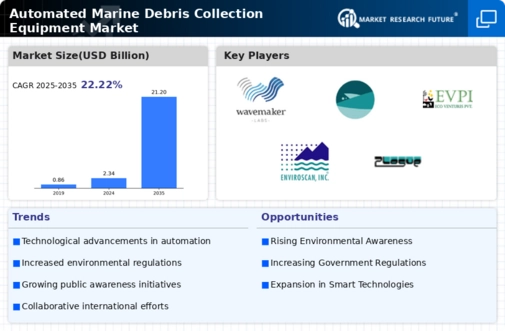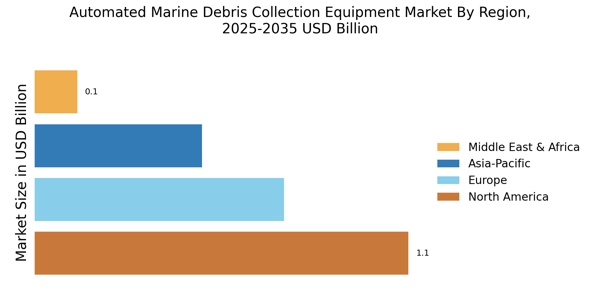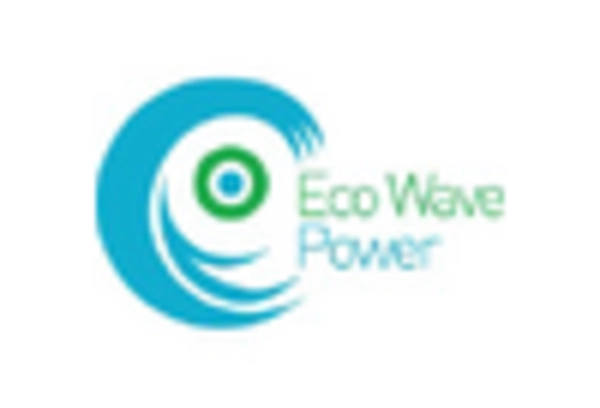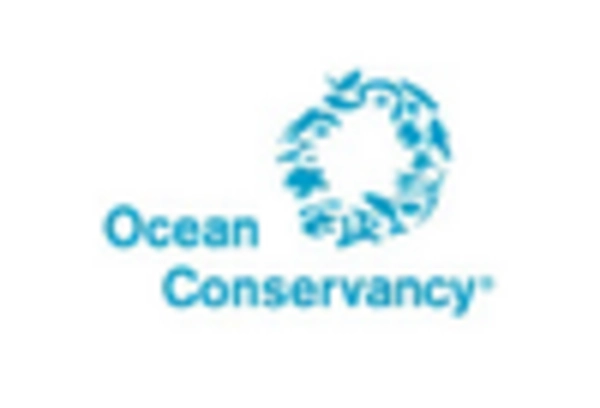Technological Innovations
Advancements in technology play a crucial role in shaping the Automated Marine Debris Collection Equipment Market. Innovations such as autonomous drones, AI-driven sorting systems, and advanced materials for debris collection are transforming how marine debris is managed. For instance, the integration of machine learning algorithms allows for more efficient identification and collection of various types of debris. The market is projected to grow at a compound annual growth rate of around 12% over the next five years, driven by these technological advancements. As equipment becomes more sophisticated, the Automated Marine Debris Collection Equipment Market is expected to attract a broader range of applications, from coastal clean-ups to large-scale oceanic operations.
Public-Private Partnerships
Collaborative efforts between public and private sectors are emerging as a key driver for the Automated Marine Debris Collection Equipment Market. These partnerships facilitate the sharing of resources, expertise, and funding, enabling the development of more effective debris collection systems. For instance, joint initiatives between governments and technology firms have led to the deployment of advanced automated equipment in critical areas. Such collaborations not only enhance operational efficiency but also promote innovation within the market. As more stakeholders recognize the benefits of working together, the Automated Marine Debris Collection Equipment Market is likely to see increased investment and accelerated growth, fostering a more sustainable approach to marine debris management.
Growing Environmental Awareness
The increasing global concern regarding marine pollution has led to a heightened demand for solutions that address this issue. The Automated Marine Debris Collection Equipment Market is experiencing growth as stakeholders recognize the importance of preserving marine ecosystems. According to recent data, approximately 8 million tons of plastic enter oceans annually, prompting governments and organizations to seek effective debris collection methods. This awareness drives investments in automated technologies that can efficiently remove debris, thereby enhancing the market's potential. As public interest in sustainability rises, the Automated Marine Debris Collection Equipment Market is likely to expand, attracting both private and public sector funding for innovative solutions.
Regulatory Frameworks and Policies
The establishment of stringent environmental regulations is significantly influencing the Automated Marine Debris Collection Equipment Market. Governments worldwide are implementing policies aimed at reducing marine pollution, which in turn creates a favorable environment for the adoption of automated debris collection technologies. For example, the introduction of laws mandating the reduction of plastic waste has led to increased funding for innovative solutions. The market is likely to benefit from these regulatory frameworks, as compliance becomes essential for industries that contribute to marine pollution. Consequently, the Automated Marine Debris Collection Equipment Market is positioned to grow as companies seek to align with these regulations and invest in effective debris management solutions.
Rising Investment in Clean Technologies
The surge in investment directed towards clean technologies is significantly impacting the Automated Marine Debris Collection Equipment Market. Investors are increasingly recognizing the potential for profit in sustainable solutions, leading to a rise in funding for companies developing automated debris collection systems. Reports indicate that investments in clean technology have reached unprecedented levels, with billions allocated to innovative projects aimed at environmental restoration. This influx of capital is likely to drive advancements in the Automated Marine Debris Collection Equipment Market, as companies leverage new resources to enhance their technologies and expand their operational capabilities. The focus on sustainability is expected to continue shaping the market landscape in the coming years.

















Leave a Comment